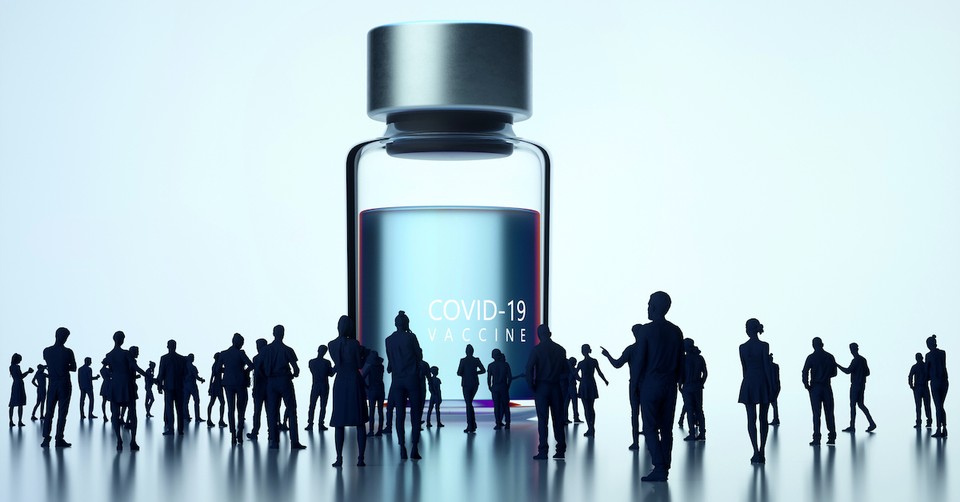Does the COVID-19 Vaccine Use Fetal Tissue? (Part 3)

After looking at the place of vaccinations within a Christian worldview in Part 1 of this article, followed by an assessment of the safety of the COVID-19 vaccines in Part 2, it is now important to consider whether the production methods and the contents of the COVID-19 vaccines are acceptable. After all, it is certainly possible for a medical treatment to be quite safe yet still unacceptable to Christians because it involves unethical procedures or contents.
Today I am going to look at one of the main ethical concerns expressed by people about the COVID-19 vaccines. The concern relates to the possible use of fetal tissues in the production of the vaccines. This major ethical concern rocketed into the public eye just after the J&J COVID-19 vaccine was released in February 2021.
NBC News (March 2, 2021) reported that the Roman Catholic Archdiocese of New Orleans was urging its parishioners to avoid the J&J COVID-19 vaccine, calling it "morally compromised" because it was developed and tested using cells derived from aborted fetal tissues.
This sparked a legitimate and widespread concern within the pro-life community about whether, and in what way, fetal tissues were being used in the production of the vaccines. Numerous social media conversations were carried on and many articles were written, some of which contained helpful information, others were very misleading. The result has been a continuing uncertainty about the vaccines.
Are Fetal Tissues Used in COVID-19 Vaccine Preparation?
As always, before we can discuss the ethics which are involved, we need to be exact about which medical science procedure was being referred to and a few frequently misunderstood items in the report must be clarified
-Firstly, the Archbishop was talking about tissue-derived cell lines, not embryonic stem cells, as some have reported.
-Secondly, he did not suggest that the COVID-19 vaccines contained fetal or embryonic tissues.
The ‘aborted fetal tissue’ statement refers to the tissue cell lines which are used for testing (and other purposes) in the production of vaccines. That is where we need to begin.
What are tissue cell lines?
Cell lines start as cells growing in lab dishes. As long as specific nutrients are provided these cells will continually divide and produce the same cells over and over and over. As one container fills up, some of the cells are moved into new containers where they have room to continue to grow. The process can go on indefinitely.
Perhaps some of you have experienced making sourdough bread? Maintaining the sourdough starter is very similar to maintaining tissue cell lines. Continuing to add the milk, flour, and sugar means that the starter keeps reproducing itself. The sourdough starter you had a week ago is the same as the one you have now - there is just more of it. And you give it away, don't you? (Anything to avoid having it take over the fridge!) After a while, all of your friends possess the same sourdough starter in their fridges.
In a roughly similar way, two particular tissue cell lines - with the unlikely names of HEK293 and PerC6 - have ended up becoming cell line standards in labs all around the world. Possessing these cell lines, each lab has some exactly similar cells on which to test new chemical reagents, antibiotics, or drugs. Scientists can then accurately compare their results to those obtained by other labs, or perhaps to their own past experiments. With that knowledge they can adjust the formula to make it more effective.
Enter cell lines HEC293 and PerC6. They have already played a role in the development of other medical treatments and they were also used in the preparation of the COVID-19 vaccines.
But here is the problem!
When we question where and when these helpful cell lines first originated, we find that the HEK293 cell line was developed using some tissue of an aborted fetus in the Netherlands in 1973, while the PerC6 cell-line was developed in 1985 by a proprietary company, also using some tissue from an aborted fetus.
In neither of these cases did the labs bring about the death of the fetus, but they did use some of the fetal tissues to begin the cell lines.
It is important to note, however, that the maintenance of the cell lines since that time has not required, or used, any further fetal tissue. Their continued growth is maintained by adding chemical substances regularly to the dish.
Should we then avoid the J&J vaccine because it was developed and tested using cells derived from aborted fetal tissues 40-50 years ago?
In a perfect world, the answer would obviously be yes. [Of course, in a perfect world this concern wouldn't have arisen in the first place.] But God tells us (and we can easily see) that this is not a perfect world, and it is not free from sinful actions. He has given us guidelines in His Word as to how to live and to make choices that are pleasing to Him, but some choices look awfully grey, not black-and-white.
The fact is that all three of the currently available vaccines used one of these cell lines, to a smaller or greater degree, while being produced.
Pfizer and Moderna's Use of Cell Lines
The Pfizer and Moderna vaccine makers used the HEK293 cell-line for two testing situations in the production of their vaccines. Prior to testing, they had already created the mRNA vaccine strands in test tubes by adding genetic nucleotide 'beads' together. (Note - mRNA strands are not alive and do not need to be maintained in living cells)
A necessary early part of any vaccine or drug production, however, is to be sure the new vaccine doesn't kill the cells it is meant to be treating (known as toxicity). So Moderna and Pfizer carried out tests in which the vaccine was placed within some of the HEK293 cells, to make sure the vaccine was safe for us.
Later on in the trials, it was important to prove that the vaccine could stimulate the production of enough antibodies to protect us. Currently, the only reliable way to do that is to place the vaccine inside the HEK293 cells again and measure the amount of antibody produced. In this way, the antibody production could be compared to the results of other labs and other vaccines, and the vaccine's value could be proved to the FDA.
Johnson and Johnson's Use of Cell Lines
On the other hand, the J&J vaccine was made in the more traditional vaccine way. In this viral-vector (viral carrier) procedure, the vaccine is carried into the body by a disabled adenovirus. Both the vaccine and the necessary parts of the adenovirus were developed within (but not being made of) the cells of the PerC6 line. This continuous use of the cells is required because viruses and viral vectors need to be nourished and can't be made in a test tube (like the mRNA vaccines). So, although there are differences in which cell line was used, and for how long, the three vaccines all used the cell lines at some point.
It might be helpful to summarize what we've found so far:
- Both cell lines originated from aborted fetal tissue 40-50 years ago. The use of the fetal tissues was an ethical problem, but one which we (today) cannot change.
- Neither cell line has added any aborted fetal tissue since then so that the ethical problem has not been ongoing or repeated.
- All three of the vaccines were produced using those cell lines in some way, although there are differences in which cell line was used, and the amount of use that was made of it.
- None of the vaccines contain, or are made of, any fetal or embryonic tissues at all.
Now let's add in these other relevant facts.
- In God’s providence, the COVID-19 pandemic continues to cause suffering, death, and economic hardship throughout the world. There are now over 850,000 deaths related to COVID-19 in the United States alone.
- Using the vaccines seems to be the surest way to prevent or alleviate these ongoing problems.
- There are no other equally widespread cell lines that could have provided the needed data comparison accuracy and comparative antibody assessment quickly enough to be of use in calming this pandemic and saving lives.
How can we apply these facts to the Archbishop’s concern (and our concern) about the use of fetal tissue cell lines in the making of COVID-19 vaccines?
I certainly understand and agree with the Archbishop’s concern. Tissues from aborted fetuses were used in the cell lines and it appears that we are now, many years later, making use of those deaths for our own good. We want to obey Jesus' first great commandment to love God with our whole heart and mind and soul, therefore we want to honor (not use) each life He creates.
If the cell lines used in the production of the COVID-19 vaccines had continually added freshly aborted fetal tissue, the act of being vaccinated could be seen to be a participation in that wrongful act and most of us would not hesitate to reject such a vaccine. But we’ve seen that is not the case.
What Should We Consider?
-We could decide that the morally flawed beginning to the cell lines outweighs the good that the vaccines do, and so choose to reject the vaccines completely to show respect for God-given life in all circumstances, being completely willing to take on the risks of remaining unvaccinated.
-But we could also consider that, since God has placed us within community and given us the second great commandment to love our neighbors as ourselves, we might need to bring “care for our neighbors and community” into the decision-making process.
What we do will affect others in an infectious pandemic. What about our service to others? Will the continued distancing and isolating and quarantining help us love our families and neighbors in the active way that is pleasing to God? Think about it. How many of us have held back from some of our normal acts of caring within our churches and within our society because of the fear of getting infected?
-We could consider God’s sovereignty over all things in our world.
In the context of our topic, this means that He is sovereign over such things as the sinfulness of man, disease, death, and modern medicine (even flawed cell lines). John 1:1-2, Isaiah 40-45, and Deuteronomy 32:39 make very clear statements about God being in charge of everything.
We need to realize that God’s control of all things is directed to the fulfillment of His eternal purpose for mankind, which is to call His chosen people into His eternal kingdom for fellowship with Him. That is the backdrop against which all of the events of our world play out.
And to bring about that purpose God has always used imperfect people and circumstances, weaving them into his good plan. So even though we don’t understand how He is doing it, we can trust that God is pursuing His kingdom-building purposes through the COVID-19 pandemic and that He could certainly use imperfectly originated, but not repeatedly sinful, medicines as part of His good care for his people.
-We could consider the way Jesus used healing.
God cares deeply for all people, as shown by the sacrifice of His only Son for our salvation. Jesus, in His life on earth, repeatedly illustrated the Father’s love by His compassion for those around Him yet He used healing not only to help their suffering but also to point them to God the Father and His eternal kingdom.
In the same way, Christ commanded flawed men like the disciples to heal others. Through the power of the Holy Spirit, the apostles carried on the mercy works of Christ as a witness to God and the coming of His eternal kingdom. Acts 3:7 (Peter and John), Acts 5:15-16 (the apostles), Acts 9:34 (Peter), Acts 16:18 (Paul), Acts 19:11-12 (Paul).
Could the relief of COVID-19 suffering afforded by the use of flawed vaccines (since there are no others available), which are given out and received by flawed people, be considered a work of God’s mercy that points them to Him?
Photo credit: ©GettyImages/AndriyOnufriyenko

Dr. Wade’s aim is to encourage other Christians to make the effort to accurately understand the relevant scientific facts involved in new medical technology, and, just as importantly, to then assess where, or if, this technology/medical treatment fits within a Christian view of the relationship between God and man.
To further this goal, she gives presentations to Christian groups, writes articles, and sporadically maintains two blogs - newmedinfo.com (currently concerning Covid-19 vaccines) and havingchildrentoday.org (dealing with assisted reproduction matters).
Originally published February 02, 2022.







